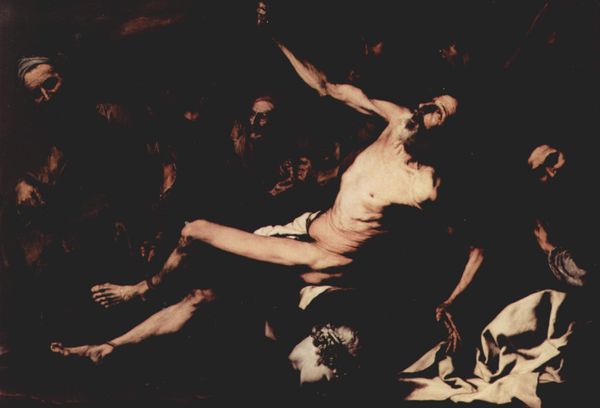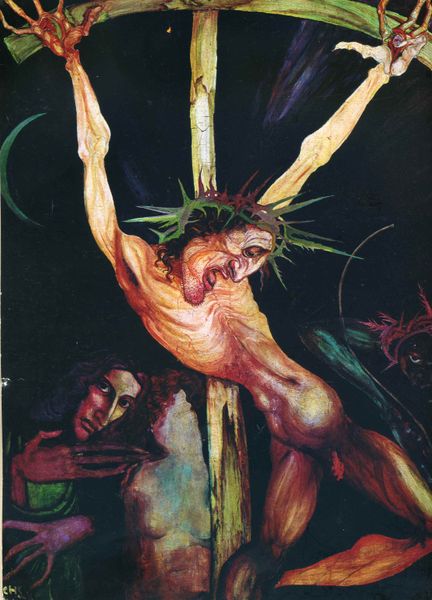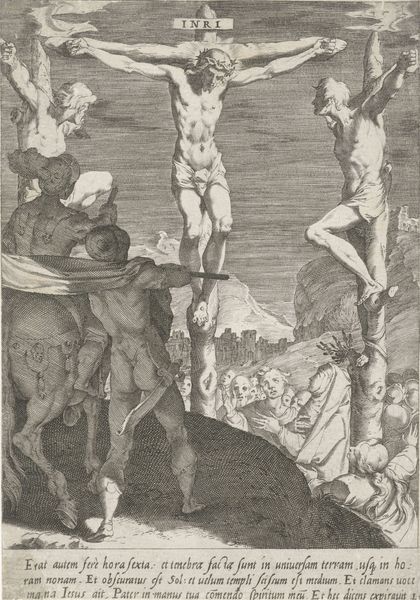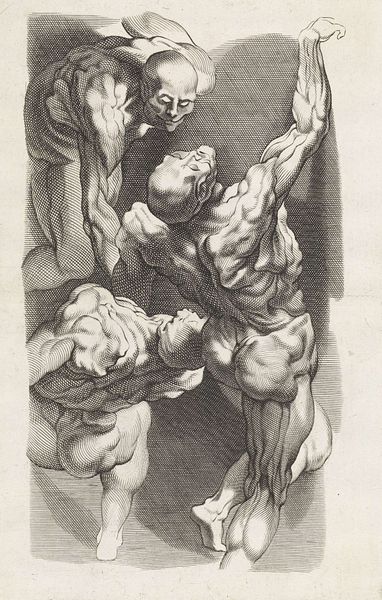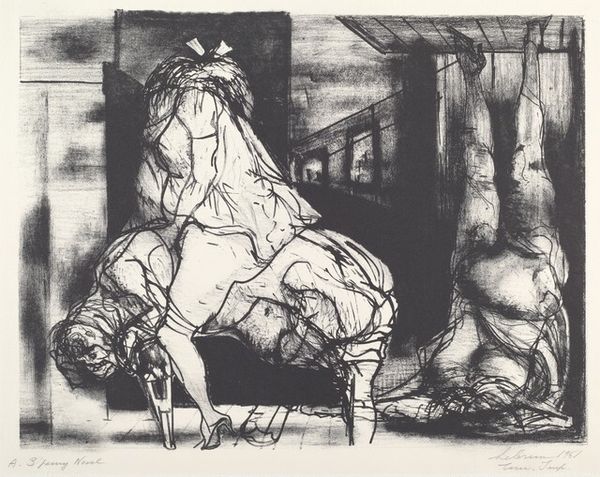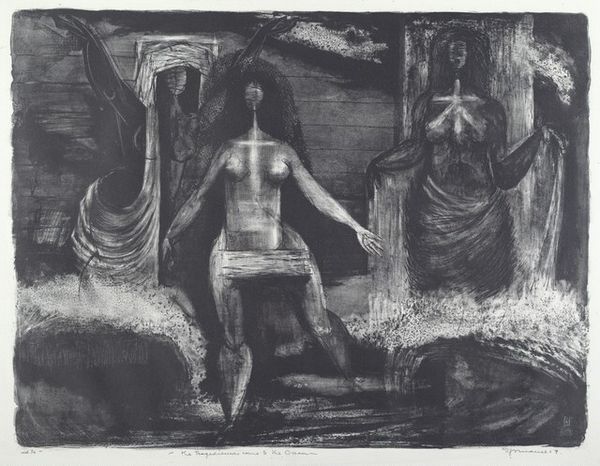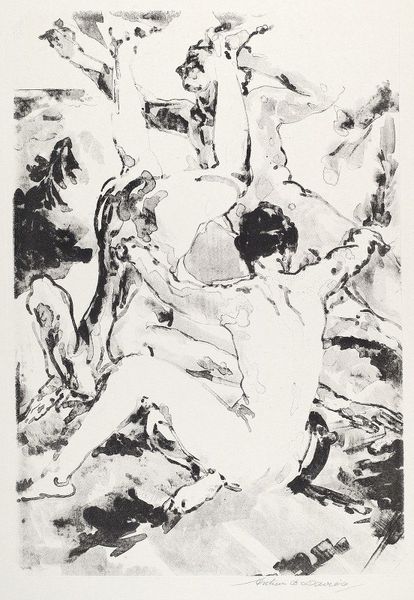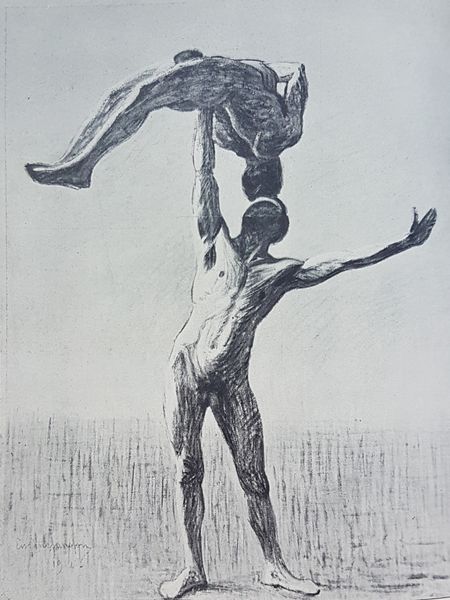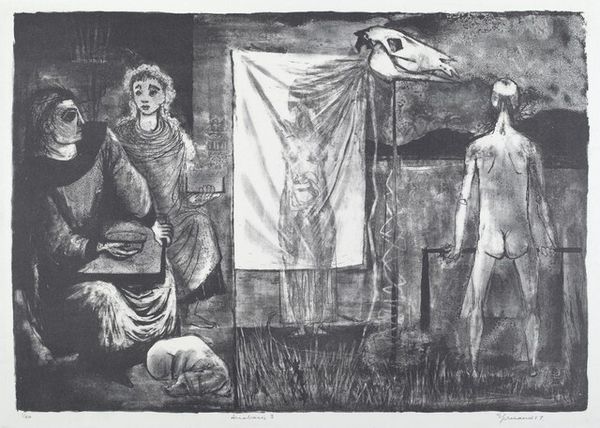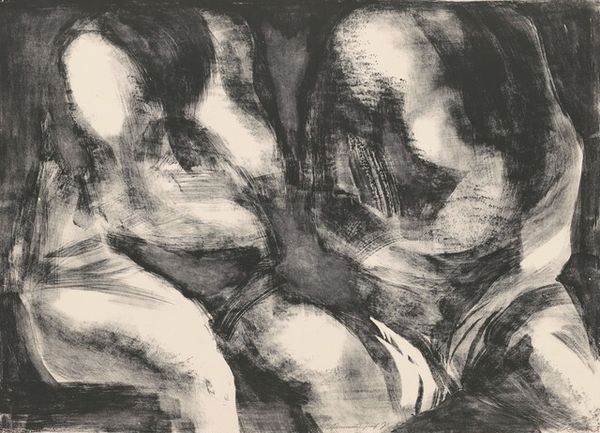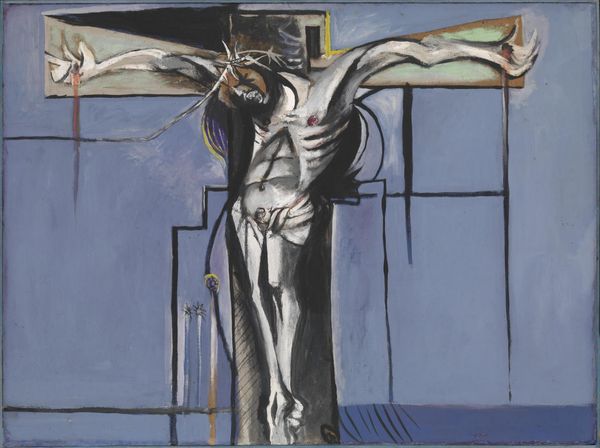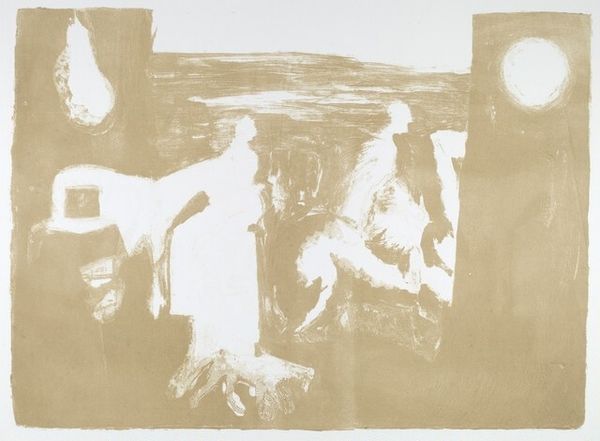
Copyright: National Gallery of Art: CC0 1.0
Editor: This is Rico Lebrun’s "Grunewald Study" from 1961, done with charcoal. The contorted figures are haunting. What historical dialogue is Lebrun engaging with here? Curator: I see a profound commentary on suffering and power, steeped in socio-political anxieties. Lebrun returns us to Matthias Grünewald's Isenheim Altarpiece, specifically its visceral depiction of Christ’s crucifixion. He translates it through a modern lens, echoing the trauma and devastation of the mid-20th century – the Holocaust, the looming threat of nuclear war. It becomes less about purely religious suffering and more about humanity's capacity for inflicting pain. What effect do you think the medium, charcoal, has on this message? Editor: The roughness and darkness of the charcoal definitely amplify the sense of brutality and despair. Curator: Precisely. It evokes the Black Arts Movement, aligning spiritual pain with social and racial struggle. Look at the figures – fragmented, distorted, mirroring a world torn apart. Consider how this piece relates to the broader themes of identity, race, and the ongoing legacies of violence in our world. Editor: It's interesting to consider how Lebrun transforms religious iconography into a broader statement about human suffering. He connects the historical and the contemporary. Curator: Absolutely, it prompts us to ask: How do we, as viewers in the 21st century, confront the pain and trauma represented in this work, and how can art catalyze empathy and social action? Editor: It is indeed powerful how historical artworks can hold such important relevance. I learned a lot.
Comments
No comments
Be the first to comment and join the conversation on the ultimate creative platform.

